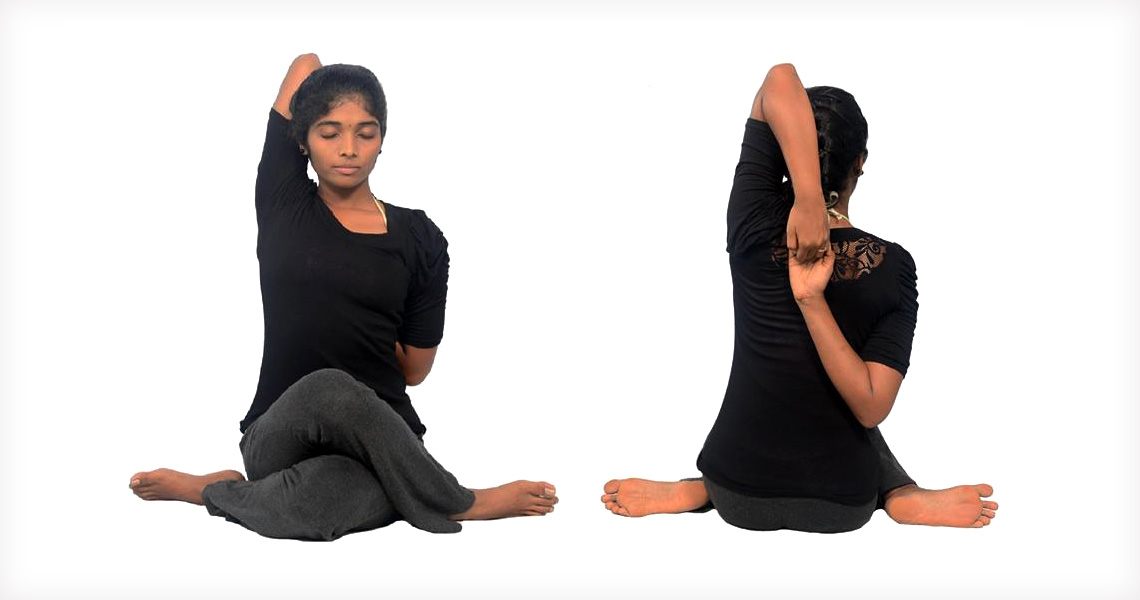The Sanskrit word “Go” means cow and “Mukha” means face. This asana is named after the position of the legs which resembles the mouth of a cow and the raised arm which looks like an ear.
The main muscles used in Gomukhasana are the hips and shoulders. It may be challenging for beginners to perform the pose correctly.
Technique:
- Sit on the floor with your legs extended forward.
- Place your palms on the floor at hip level and lift your body.
- Bend the left leg at the knee and place it on the floor so that you sit on the left foot.
- Bend the right leg at the knee and place it on top of the left thigh with your feet pointing upward.
- Raise your left hand up, bend at the elbow and place your palm along your spine with your palm down.
- Bend your right hand at the elbow and place it with the palm up between your shoulder blades.
- Clasp your hands together. Hold the pose for 30 seconds (for beginners) to a minute or more. Keep your gaze forward, neck and head straight.
- Return to position 1. Repeat the asana on the other side, alternating the left and right clasps of the arms and legs.
- To intensify the pose, lean forward from position 7 and hold for 30 seconds.
Experienced yogis are advised to perform Salamba Sirshasana before Gomukhasana.
Gomukhasana is recommended for improving flexibility in stiff joints, shoulders, knees, correcting posture and flat feet. It also opens up the chest for better breathing.
Be cautious if you have osteochondrosis of the cervical spine or pain in your legs. Gradually work towards clasping your hands behind your back and find a position that does not cause discomfort.
Warning: Avoid this asana during periods of exacerbation of any chronic diseases. If you are a beginner, it is recommended to work with a yoga instructor and consult a doctor before attempting this pose.



